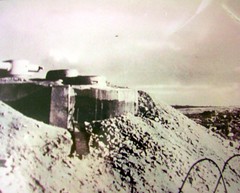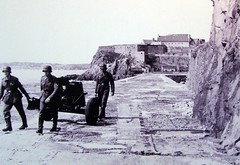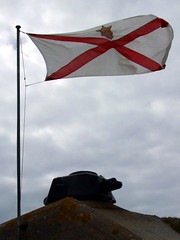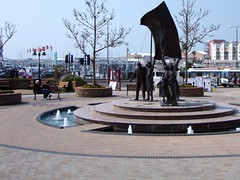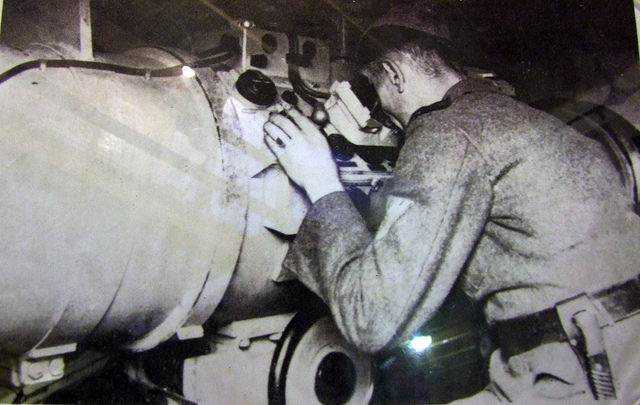
For almost five years, Jersey with the rest of the Channel Islands was occupied by the Nazi Germans; the Channel Islands were the only part of Great Britain to be occupied during World War II.
Hitler’s invasion of the Channel Islands was unexpected and Jersey was still being advertised as the perfect holiday destination just a week before the Occupation started on July 1st 1940 this might have something to do with the fact that Jersey was largely ignored during the First World War. Jersey and The Channel Islands were occupied eight months after Britain declared war on Germany. The British Government had left the Islands unprotected the German forces did not know this they bombed Jersey before invading.
In the beginning The Channel Islands were used as a place for rest and relaxation for the troops but the occupiers soon set about Germanising the Islands. The language of the road signs was changed to German cars had to drive on the right and schoolchildren were forced to learn German.
There is lots of evidence of the occupation scattered around Jersey, invading the Channel Islands was a propaganda coup for Hitler, he was also persuaded to turn Jersey into a near impregnable fortress.
The Channel Islands were a heavily defended part of Hitler’s Atlantic Wall; he personally ordered the islands to be turned into fortresses. He mistakenly thought that the Allies might mount an attack in this direction during the German move on the Soviet Union in Operation Barbarossa.
[flickr]tag:memorabilia+german@Jerzzy Journey Boutique(,10)[/flickr]
Hitler had a certain fixation with the Channel Islands and gave them priority when allocating arms and men. The Channel Islands had 11 heavy batteries with 38 guns, whilst there were only 37 guns allocated for the whole of the 600 miles between Dieppe and St Nazaire.
Nearly all the gun emplacements still exist it proved to be very difficult to get rid of the many concrete bunkers after the war. They are still dotted around the coast and some are adapted for alternative use. The Germans adapted and used some of the fortifications built by Islanders to defend Jersey against Napoleon’s forces. They didn’t need much work to make them fit for modern warfare. The Germans also made use of even older fortifications, including Mont Orgueil and Elizabeth Castle by adding gun emplacements to them..
It is estimated 6,000 slave workers were shipped to Jersey as labour to help build the many structures. They worked and died in atrocious conditions building everything from anti-tank walls of St Ouens to a huge underground hospital which is still open to the public. 484,000 cubic metres of concrete was used to fortify the Channel Islands the islands.
[flickr]tag:atlantic+wall@Jerzzy Journey Boutique(,25)[/flickr]
The Channel Islands were so small and with no military capabilities it would have been impossible to create a resistance movement so most Islanders just refused to co-operate with the regime as their way of fighting back.
The occupying German military authorities would not tolerate even the smallest acts of defiance and anyone caught listening to radio broadcasts from London or painting V for victory symbols over German signs would be sent to prison. Offences such as sending carrier pigeons with messages to England or even showing kindness to the slave labourers was punishable by death.
The Allied forces invaded Normandy but this did not end the war for the Channel Islands. With their supply route from France cut off, siege mentality became entrenched in the Occupying forces. The new Commander-in-Chief of the Channel Islands in February 1945, Admiral Friedrich Huffmeier, was a fanatical Nazi. “We shall never surrender,” he told Jersey’s Bailiff Alexander Coutanche. “In the end you and I will be eating grass.”
Eventually on May 9th 1945 a British relief force arrived to be greeted by ecstatic Islanders and liberated Jersey.
There are several museums in Jersey telling the story of the German Occupation, and there are many Islanders who still remember those dark days. The Liberation is re-enacted every year on Liberation day in Liberation Square and memorials have been erected around the Island along with a website dedicated to the memory of those who suffered.
There is a monument to the Slave workers at the crematorium however the bodies of the slave workers were returned to their respective countries. The bodies of the German soldiers who died whilst serving in Jersey were originally buried at St Brelade’s church however these too have been returned.
What is left of the German occupation is accepted as part of Jersey heritage and thousands of people a year will walk and sit on German fortifications without even realising what they are.


